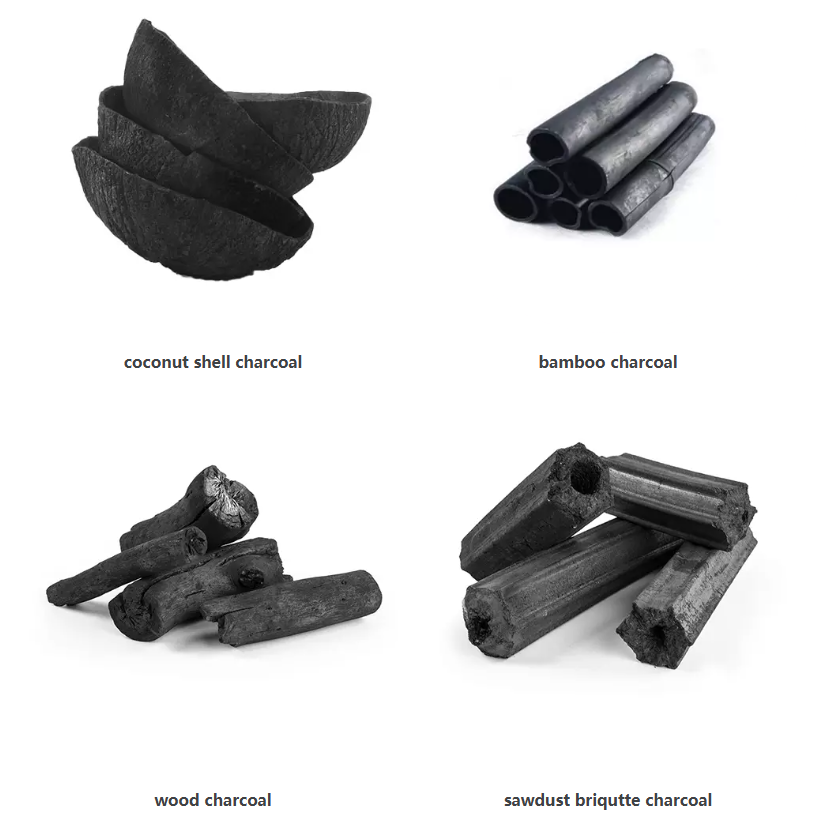Continuous carbonization refers to a process where organic materials, such as biomass or agricultural waste, are continuously converted into charcoal through a controlled heating process in a carbonization furnace, also known as a continuous charcoal kiln. Continuous carbonization systems allow for uninterrupted operation, enabling a constant supply of charcoal production, often used in large-scale industrial operations.

The process flow in continuous carbonization furnace typically follows these steps:
1. Raw material is fed into the furnace through the feeding system.
2. The biomass enters the carbonization chamber, where it undergoes pyrolysis.
3. The produced charcoal moves to the cooling zone.
4. Charcoal is discharged from the furnace.
5. Gases released during carbonization are collected, purified, and either used as fuel or safely released.
This continuous process allows for efficient and large-scale production of charcoal, with minimal manual intervention and high consistency in product quality.
By the way, if you want the small-scale charcoal production, you can choose the small batch carbonization furnace.
Feeding System: Conveyor Belt/Screw Feeder
Transports raw biomass (wood chips, sawdust, agricultural waste, etc.) into the furnace.
Carbonization Chamber:
Inside the carbonization furnace, the organic materials undergo pyrolysis, which is the thermal decomposition of organic compounds in the absence of oxygen. This process occurs at elevated temperatures, usually between 400°C to 600°C, depending on the material and desired end product.
Heating and Carbonization:
The carbonization chamber is heated through external heating and internal combustion process.
The combustion system heats the kiln to temperatures of 400-600°C, producing hot gases that pass through the biomass material. When the material is heated, volatile gases, tar, and other by-products are released. These gases are typically collected and can be used as fuel for heating or for other purposes.The remaining solid residue undergoes carbonization, transforming into charcoal.
Cooling and Collection:
After carbonization, the charcoal enters the cooling system from the furnace for cooling to avoid spontaneous combustion and prepare it for discharge.The temperature of the charcoal powder quickly drops from about 400°C to about 20-30°C, and can be discharged and bagged.
Gas Collection and Purification System:
Gas Collection Pipes: Collect gases released during the carbonization process.
Cyclone Separator: Removes particulate matter from the gas stream.
Condenser: Cools and condenses tar and other volatile compounds from the gases.
Gas Purification Unit: Further cleans the gases, which can then be used as fuel for the heating system.

Continuous Operation: Continuous carbonization systems allow for uninterrupted operation, enabling a constant supply of charcoal production. This continuous operation maximizes efficiency and productivity compared to batch processes, where downtime for loading and unloading can reduce overall output.
High Efficiency: Continuous carbonization systems are designed for optimal heat transfer and retention, leading to high thermal efficiency. This results in lower energy consumption per unit of output compared to batch processes, where heating and cooling cycles can lead to energy losses.
Automated Control: Continuous carbonization systems offer better control over process parameters such as temperature, residence time, and airflow. This allows for precise adjustment of conditions to optimize charcoal quality and production rate. Automated control systems further enhance process control and consistency.
Labor Saving: With continuous operation and automated controls, continuous carbonization systems require less manual intervention and supervision compared to batch processes. This reduces labor requirements and associated costs, making the production process more cost-effective.
Consistent Quality: The controlled and uniform heating conditions in continuous carbonization systems result in consistent product quality after continuous carbonization.
Resource Efficiency: Continuous carbonization systems can utilize a variety of feedstock materials, including biomass residues, agricultural waste, and forestry by-products. By converting these waste materials into valuable charcoal, continuous carbonization contributes to resource efficiency and waste reduction.
Environment Friendly: The production of charcoal through continuous carbonization is typically more environmentally friendly compared to traditional charcoal production methods, which often involve emissions of harmful pollutants. Efficient gas collection and purification reduce emissions to minimize environmental impact.
For more details, please feel free to contact us.
Henan Lane Heavy Industry Machinery Technology Co., Ltd.
Email: sales2@lanesvc.com
Contact number: +86 15515885328
Whatsapp: +86 15515885328